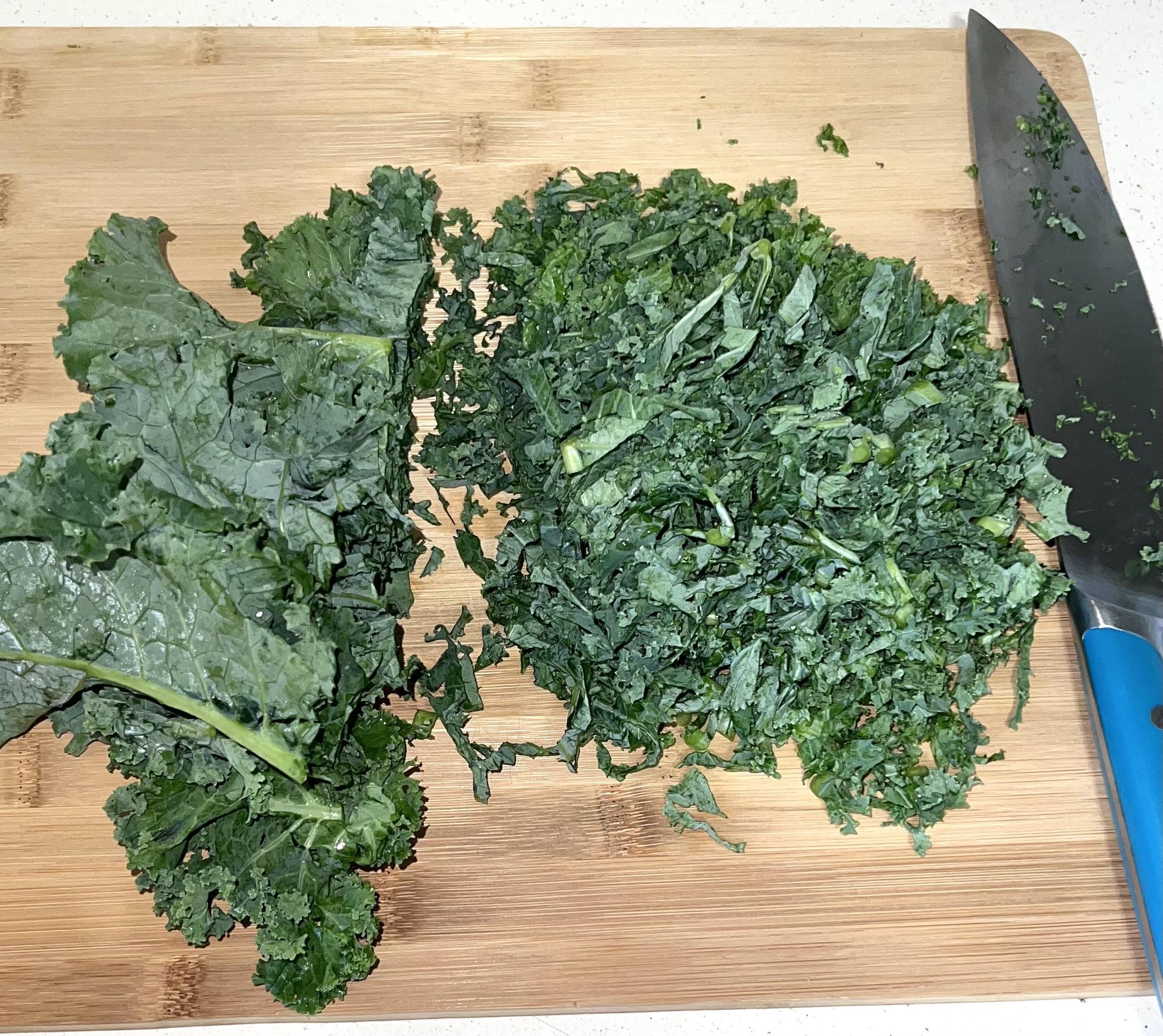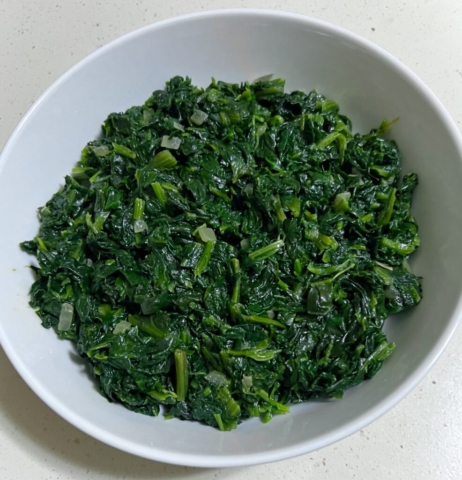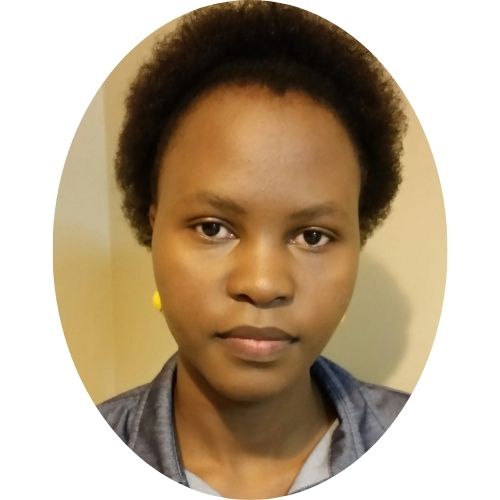This post may contain affiliate links, which means I may receive a commission from purchases made through the links.
Every region of the world seems to have leafy vegetables that are local, native, or unique to it. Often, I look at videos of people preparing vegetable dishes and I am like, “What plant is that now?” I wouldn’t be surprised if someone else said the exact same statement about the vegetables that I grew up eating and that are native to my homeland. In this article, I go over the common vegetables in Kenya and the United States, focusing on both those that are common in both regions as well as those that are unique to each region and drawing comparisons where applicable to simply shed light on this topic for those who are interested in it.
Common Vegetables in both Kenya and the United States
Kale, collard greens, cabbage, and Swiss chard (Kenyan spinach) are some of the vegetables that are common in both Kenya and the United States. When I first moved to the United States, I was so relieved to find these familiar vegetables in the grocery stores. We all know how difficult it can be to adapt to new food, especially during those first days abroad. Besides, Kenyans like me eat ugali a lot, and that dish doesn’t go so well without greens. So, greens matter to us. A lot.
Kale and Collard Greens (Sukumawiki)
Sukumawiki is probably the most popular and widely eaten leafy vegetable in Kenya. It is commonly served with Ugali, the combination of which is a staple in the country. Whether sukumawiki translates to collard greens or kale is an unending debate online. I tend to think it is a different variety from both because the vegetable which is grown in Kenya is kind of in between the curly kale and the wide-leafed collard greens. Anyway, the words sukuma wiki mean ‘push the week’ and if you ask some Kenyans why the vegetable has this peculiar name, they’ll tell you that it is that dish that saves the day when you cannot afford a fancier meal. It helps ‘push the week on.’ Ugali-sukumawiki is a cheap yet filling meal. When you are feeling fancy (just kidding, this is a common practice) you include a protein, like meat stew in the mix.
In the United States, kale and collard greens are two completely different vegetables. Their usage as well as where they are commonly consumed differ. Kale is mostly consumed raw such as in salads and smoothies while collard greens are cooked in particular recipes. I also read that collard greens are more associated with the southern parts of the US even though they are consumed all around the country. Collard greens also feature in certain holidays such as Thanksgiving and New Year’s Day where they are served with tantalizing meats, mac n cheese, and cornbread among other mouth-watering dishes. In addition, there is a special festival in the Southern US that celebrates collard greens. The Tampa Bay Collard Green Festival takes place in St. Petersburg Florida every year to celebrate African American culture through food and more. This festival often features a collard green cook-off! I would love to attend this festival!
How is Kale Consumed?
Unlike Americans who eat their kale raw most of the time, Kenyans mostly cook their sukumawiki. It is unheard of to eat this vegetable raw owing to its… disturbing taste. I have seen a lot of Americans complaining online about how ‘disgusting’ the vegetable tastes and I think to myself, “Maybe you should try it the Kenyan way? You’ll most likely have your mind blown.” Here are some of my delicious recipes for sukumawiki to prove that point. (1) sautéed kale with onions, (2) kale with eggplant and carrots, and (3) kale and beef in one pot. So good!
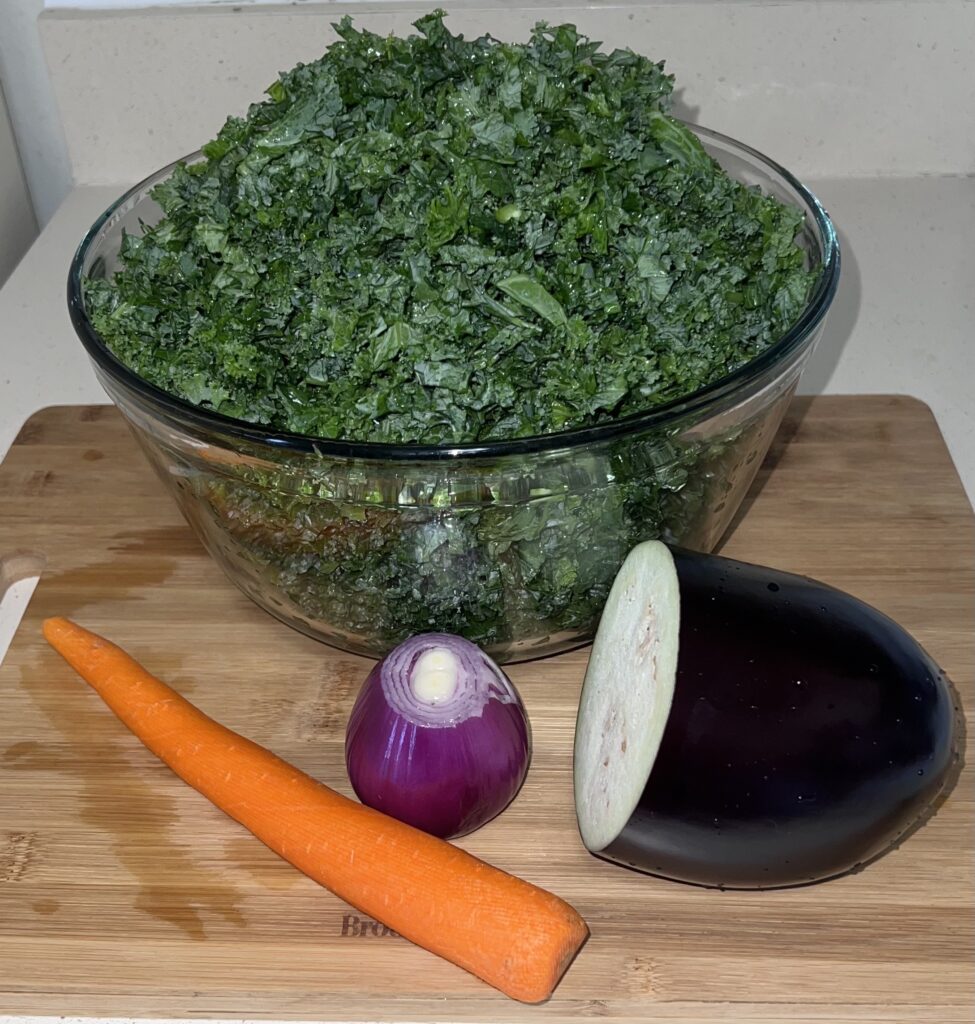
Cabbage
Cabbage is also widely used in both Kenya and the United States. In Kenya, it is probably the second most widely consumed vegetable after sukumawiki. It is also the only leafy vegetable that Kenyans will eat raw such as in salads. All other vegetables are preferred cooked. Here is one common way in which Kenyans cook cabbage; sauteed cabbage with carrots and bell peppers.
In the United States, cabbage is more often consumed raw in salads like coleslaw. Its leaves may also be used as wraps in some recipes.
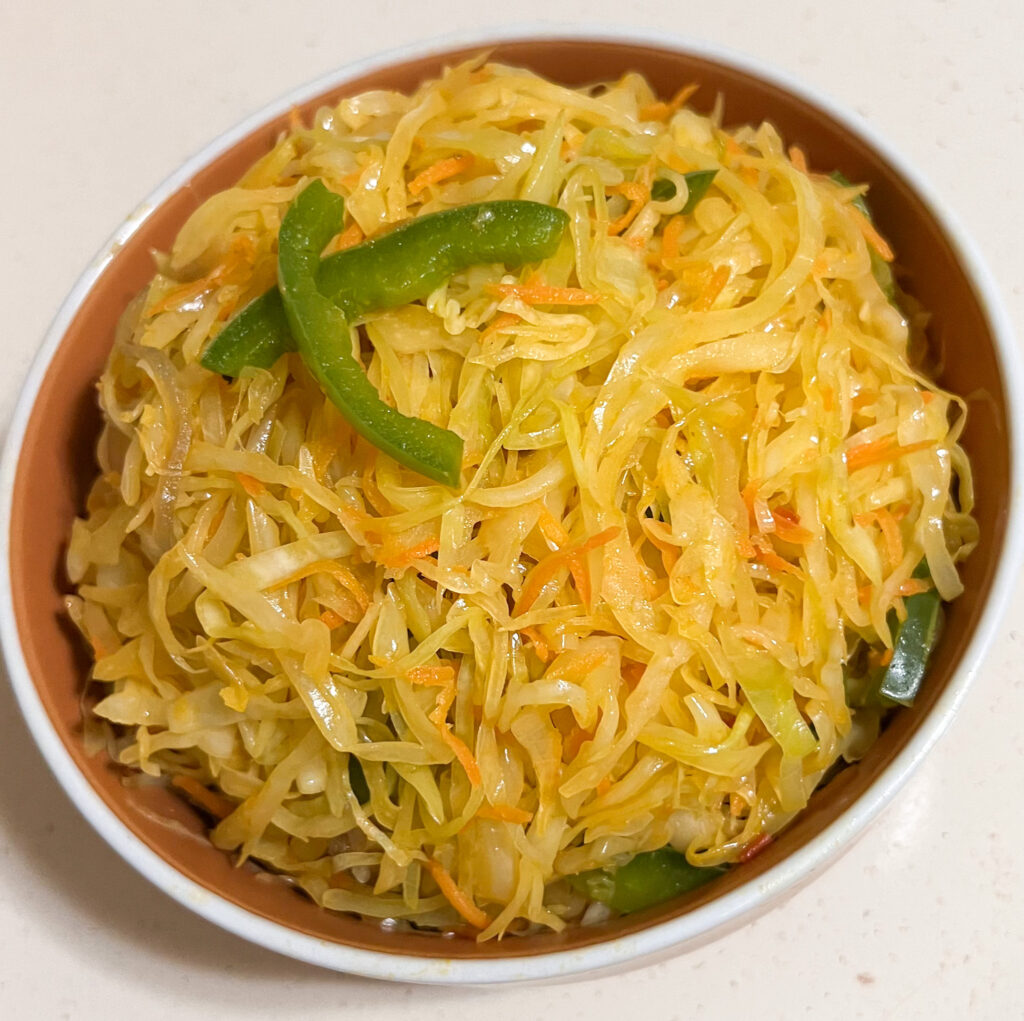
Swiss Chard (Kenyan Spinach)
This is another vegetable that causes confusion to many Kenyans when they first arrive abroad. If you were to visit Kenya and ask for spinach in any grocery stall, supermarket, or restaurant, you will most likely be presented with Swiss chard. Just a matter of names. I do not know how Kenyans ended up calling this vegetable spinach. Also, the spinach that is extremely popular in the United States and other European countries is virtually absent in Kenya. So, that helps because then Swiss chard gets to comfortably keep that name.
Kenyans cook Swiss chard the same way they do with kale. Since it is a softer vegetable, it is sometimes mixed with kale to add softness to the dish. Another common recipe for Swiss chard in Kenya is to cook it with eggs in one pot. This combo is perfect for breakfast as well as an accompaniment for ugali. I will link the recipe here as soon as I have it ready.
I have not yet explored popular Swiss chard recipes in the United States. If you read this and know of some, please do share with me.
Common Vegetables in Kenya
In this section, I talk about vegetables that are commonly consumed in Kenya but not in the United States. By no means are these vegetables unique to Kenya. Most of them are also eaten in other East and South African countries and other parts of the world.
Kunde (Cowpeas/Black-eyed Peas)
Kunde is popularly consumed in Kenya in both urban and rural areas, and from the western to the coastal region. While many cultures grow this plant for its seeds, Kenyans largely grow it for the leaves. Of course, Kenyans harvest cowpea seeds too, and use them in recipes similar to other beans. In most cases though, the vegetable is harvested while the leaves are still young and soft. Kunde can simply be sautéed if soft enough. Otherwise, if the leaves are more mature, they become too tough and need to be softened in cooking. A special ingredient obtained from the ashes of burnt bean pods is used for this purpose. Kunde leaves can also be mixed with other softer vegetables to add softness to the dish. Kunde is mostly served with ugali as a more traditional substitute for sukumawiki.
Mnavu/Managu (Kenyan Nightshade Leaf)
Another very popular vegetable to serve with ugali in Kenya. This vegetable can be bitter. I’m talking, real bitterness that will make you squint and squeal while eating. But guess what? The more bitter it is, the more some Kenyans love it! The vegetable is said to aid in treating high blood pressure and diabetes.
Saka/Saga (Spiderplant)
Saka is another bitter herb that is tremendously loved by Kenyans and considered one of the most treasured traditional vegetables. Like other traditional vegetables, saga is more expensive than sukumawiki and cabbage and is often in high demand. Saga is Managu’s competitor in bitterness. I’m telling you, growing up, we hated it whenever these vegetables were on the menu for dinner. I cannot recall though where, when, and how the tables turned, and I came to love this bitter herb so much in my adulthood.
Mchicha (Amaranth)
Mchicha is a type of amaranth plant. It grows very fast and is soft with a mild taste. There are numerous varieties of mchicha in Kenya, some green and some purplish, some with larger and some with smaller leaves. Mchicha cooks very quickly as it is a soft vegetable. Often, Kenyans will sauté it with just onions and serve it alongside ugali, chapati, or rice dishes like pilau. Mchicha can also be stewed or creamed for a richer taste.
Mrenda (Jute mallow)
Mrenda is a slimy-when-cooked vegetable of the same family as okra. With mrenda, you either love it so much or you hate it with a passion. I belong to the former group. Mrenda is not only nutritious but also extremely delicious when cooked well. The traditional food softener that I mentioned earlier when talking about Kunde is also often used to cook mrenda. The slimier it is, the better (sorry if that bothers you).
Mirro (Slenderleaf)
Mirro is also a commonly consumed traditional vegetable in Kenya. It is one of the common vegetables although it may be more popular in western Kenya than in other parts of the country. Mirro may be cooked alone or mixed with mrenda, Kunde, or mchicha. This vegetable’s taste can range from mild to wildly bitter depending on what kind of soil and weather conditions it grew up on. Mirro that grows on fertile ground with lots of water is mild while that which grows in dry conditions tends to be bitter.
Maseveve/Seveve (Pumpkin Leaves)
The varieties of pumpkins grown in Kenya are often those whose leaves are also eatable. I am not sure though, if the leaves of the orange Halloween pumpkins that are commonly grown in the US are eatable too. In Kenya, many families will grow pumpkin plants primarily for the leaves which make a delicious accompaniment to ugali. The leaves must be prepared in a special way to rid of the spiky exteriors before they are washed, chopped, and cooked. Often, pumpkin leaves are stewed, and milk or cream may be added. Both their texture and taste are quite too strong for a simple sauté. You would not be able to eat them that way.
Common Vegetables in the United States
In this section, I talk about some of the vegetables that are commonly consumed in the United States but are barely present in the Kenyan market. Of course, these vegetables are not unique to the United States as they are consumed in other parts of the world as well.
Lettuce
Let’s just say, lettuce in the US plays the same role sukumawiki does in Kenya. According to Statista, lettuce is the most popular leafy vegetable in the country, commonly used in salads, sandwiches, and burgers. In fact, the numbers show that the consumption of lettuce by Americans has only increased over time. What can I say? The vegetable is so soft and juicy that even I as a Kenyan (who doesn’t normally entertain the idea of eating raw leafy vegetables) was like, “Okay, give me more of that” the first time I had a bite of the vegetable.
Spinach
Spinach (not in Kenyan terms) is another popularly consumed vegetable in the United States. It is an extremely versatile vegetable that can be incorporated into a multitude of recipes ranging from smoothies and salads to sautés, soups, stews, creamed dishes, and much more. Spinach is easily available in both fresh and frozen versions in American grocery stores. By the way, ever since I discovered that this ‘American’ spinach is such a great accompaniment to ugali, I eat it more than I do kale, cabbage, or any other leafy vegetable. It has literally become a staple in my household. My favorite recipes for spinach are (1) sautéed spinach in butter and onions, and (2) creamed spinach. If you are an avid ugali eater too, this is your vegetable! Note that the frozen version is much better than the fresh version if you are making it to eat with Ugali. Thank me later.
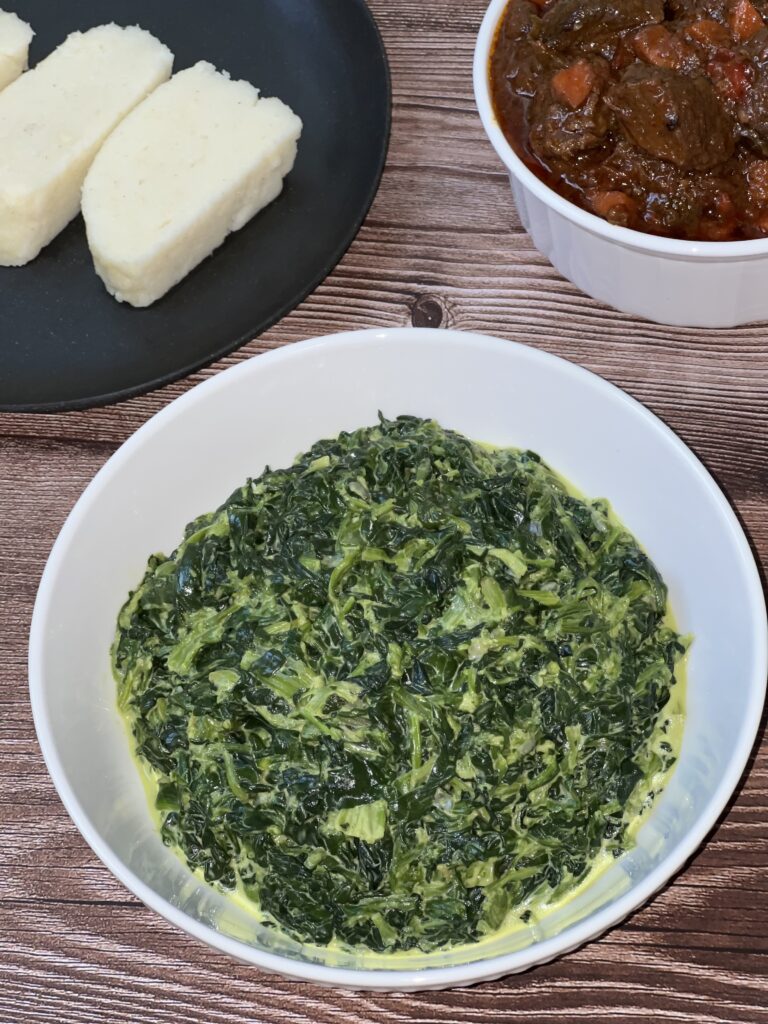
Arugula
“What? Are you sure you are not eating weeds?” were my thoughts when I first saw this on someone’s plate in a restaurant. The vegetable looks quite weird, for real. But my oh my! Is it tasty! With a freshly made awesome dressing, I could eat a whole large bowl of arugula now. Arugula is also a common vegetable in the US and Americans often serve arugula on its own as a salad or mix it with other leafy vegetables like spinach for a richer salad. Indeed, this vegetable is one of the best ones out there.
Conclusion
To wrap it up, Kenya and the US do share some common vegetables while there are some that are unique to each country. As someone who has had the pleasure to eat from both cultures, I recommend you try out some of these vegetables too when you have a chance. Go for something totally new and who knows, you be absolutely amazed. Feel free to share about vegetables that you have encountered in different cultures that mesmerized you in one way or another.
